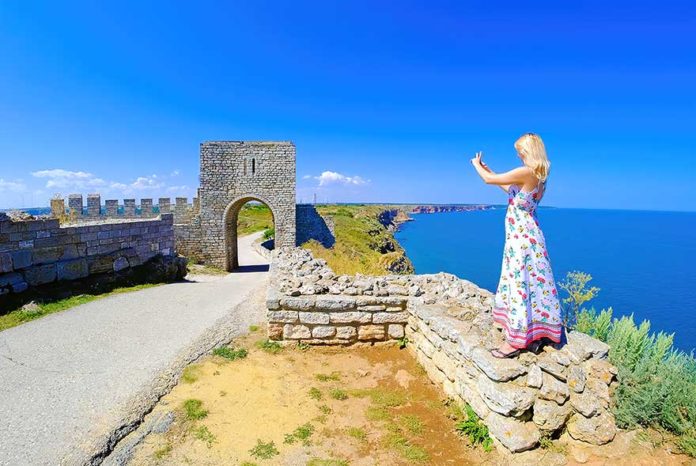Cape Kaliakra in Bulgaria is a beautiful nature reserve and a place of historical significance. The cape is a long and narrow peninsula stretching two kilometers into the Black Sea, situated in the southeastern part of the Dobrudzha plateau. The region is home to various species of birds and marine animals, including the Aristotelian cormorant and dolphins. The rugged cliff coastline comprises Sarmatian limestone and conglomerates fused with clay rich in iron oxide, giving it a distinctive reddish hue.
The coastline’s unique features result from the powerful abrasion caused by the pounding of the waves over thousands of years. As a result, numerous underwater rocks have been sculpted into fascinating shapes and formations, such as caves, niches, and arches, which can only be reached from the sea. The bay formed by the Cape Kaliakra peninsula provides a haven for ships during storms, and it is home to a museum, restaurant, lighthouse, marine radar station, weather station, and a small chapel.
Cape Kaliakra is not only a place of natural beauty but also a place of historical significance. The earliest settlers of the peninsula date back to the 4th century BC when the Thracian tribe of the Tirez inhabited the area. They gave the peninsula its first name – Tirezis. According to the ancient geographer Strabo, the capital of King Lysimachus, one of Alexander the Great’s successors and the governor of Thrace, was located at Cape Kaliakra. He kept his countless treasures in the caves near the cape and looted them during his campaigns against Persia.
In the Hellenistic era, a second defensive wall was built further inland, and during the Roman period, the Thracian fortress was expanded. In 341-342 AD, round towers were added, and an outer and inner city was established. In the second half of the 4th century, a third fortress was built further inland from the cape, with walls 10 meters high and 2.9 meters thick. During the archaeological excavations conducted in the 20th century, the remains of ancient and early Christian necropolises were discovered at Cape Kaliakra.
During the 5th and 6th centuries, the fortress (under the name Akre – the cape) became an essential fortified nucleus against the invading barbarian tribes. It was one of the fifteen cities of the Scythia province. In 513 AD, a battle occurred near Cape Kaliakra between the rebellious military leader Vitalian and the Byzantine emperor Anastasius I. Over the following centuries, the settlement and fortress developed. Still, some researchers said it declined in the 7th century because the Slavs and Proto-Bulgarians showed no interest in settling there. In sources from the 10th century, the names Tetrasyda and Tetrasyada, Tetrisias, Trisa, Tiriza, and Tirsta are mentioned.
Cape Kaliakra’s rugged cliffs, hidden caves, and unique underwater rock formations make it a haven for adventure seekers and nature enthusiasts. Its historical significance is evident in the remains of ancient and early Christian necropolises, defensive walls, and fortresses. As one of the hundred national tourist sites in Bulgaria, Cape Kaliakra is a must-see destination for anyone visiting the region.



